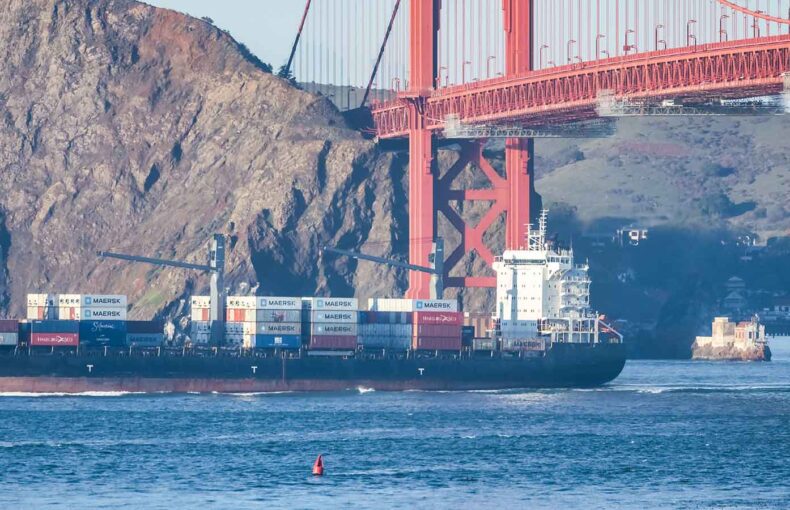Unlocking maritime intelligence with Historical AIS data
Understanding past vessel movements, using Historical AIS, is essential for gaining insights into maritime operations, market dynamics, security, risk assessments, environmental impacts, and regulatory compliance.
Historical AIS data provides a comprehensive record of ship positions, routes, and activities over time, supporting everything from incident investigations to optimizing shipping efficiency. By analyzing this data, maritime professionals can identify trends and patterns in vessel movements. When integrated into machine learning models, Historical AIS data unlocks deeper insights, enabling optimized routing, predictive maintenance, enhanced safety, and greater operational efficiency, shaping the future of maritime analytics.
Spire’s Historical AIS Data is the global archive offering the most comprehensive and granular view of AIS history available, including vessel tracking data dating back to 2010, which enables in-depth shipping analysis across a wide range of industries and use cases.
Leveraging Historical AIS Data to enhance logistics operations
Historical AIS data provides valuable insights for optimizing supply chain management by tracking the movements of cargo vessels over time. While AIS data itself does not track individual containers or goods, it enables logistics professionals to analyze vessel routes and movements, arrival and departure times, as well as port activities to infer key vessel behavior. For example, by examining the historical paths of vessels, operators can predict which shipping lanes are most efficient and identify areas prone to congestion or delays. Reviewing port activities, such as time spent at dock or waiting for clearance, can reveal bottlenecks in the supply chain. By identifying trends and inefficiencies in past operations, logistics teams can better estimate transit times, improve scheduling, and adjust capacity planning to meet demand. Furthermore, the ability to track vessel movements over time supports proactive decision-making, such as anticipating disruptions and rerouting cargo to maintain timely deliveries. This comprehensive analysis ultimately enhances overall logistics performance, leading to more reliable and cost-effective supply chain operations.
Optimizing fleet performance
Historical AIS data is invaluable for tracking and managing shipping operations. By assessing past fleet performance, such as routes taken, delays encountered, and key performance metrics like speed and fuel consumption, operators can identify patterns that contribute to operational inefficiencies. For instance, delays in specific ports or recurring detours along certain routes may point to opportunities for optimization. Additionally, historical data can inform maintenance schedules by revealing trends in vessel performance, helping to predict when certain parts are likely to fail or require service. This data-driven approach enables operators to make informed decisions that enhance fleet performance, reduce delays and demurrage costs, and ultimately improve efficiency and cost-effectiveness across shipping operations.
Understanding long-term market trends
Understanding long-term market trends and anticipating shifts in commodity flows is made possible by the instrumental role of Historical AIS data. By studying past shipping trends, route modifications, and cargo volumes, businesses can uncover patterns in global trade that help predict future market conditions. For example, a drop in vessel traffic on a particular route may signal a decrease in demand for certain goods, while changes in the types of cargo being transported could indicate emerging market trends. When integrated with other key data points, such as global economic indicators or major geopolitical events, AIS data provides a holistic view of supply and demand dynamics for various commodities. This combined analysis helps businesses forecast market shifts and adjust distribution plans to meet changing demands. Additionally, tracking fluctuations in shipping activity over time can enable companies to identify potential supply chain disruptions and proactively respond to changes.
Advancing academic research
Academic research benefits greatly from resources like Historical AIS data, which supports studies on maritime traffic patterns and their broader implications. Researchers can use this data to explore the environmental impacts of shipping, such as the effects of emissions on marine ecosystems or the consequences of shipping routes on biodiversity. Additionally, it offers insight into how maritime regulations influence vessel behavior, such as the implementation of emission control areas. Beyond environmental studies, Historical AIS data also supports academic research in climate change, marine conservation, and maritime transportation, providing a historical record of vessel movements that can be analyzed for long-term trends. By integrating AIS data with other data used for research, universities can gain a more diverse understanding of how shipping practices intersect with global environmental and economic challenges.
A key resource for accurate risk assessments
A detailed record of vessel movements, performance, and behavior is essential in the maritime insurance sector, making Historical AIS data a key resource for risk assessment and policy decisions. Insurance providers can leverage this data for a more accurate risk assessments by analyzing patterns in vessel operations, weather conditions, and potential hazards. By cross-referencing AIS data with historical incidents, insurers can validate claims, identify potential fraud, and better understand the risk associated with different routes, regions, and vessel types, ultimately informing premium pricing strategies.
Training machine learning models with Historical AIS data
Historical AIS data is an invaluable asset when it comes to supporting machine learning initiatives in the maritime sector. By providing extensive historical records of vessel movements, it enables machine learning models to predict future trends, optimize routes, and forecast risks with greater accuracy. Leveraging this data, businesses can train algorithms to improve operational efficiencies, reduce fuel consumption, and enhance safety measures. As machine learning models become increasingly sophisticated, integrating granular and comprehensive Historical AIS data will continue to play a crucial role in driving innovation and performance across the maritime industry.
 Written by
Written by


